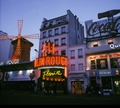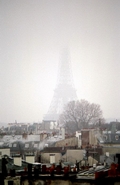HOME
TOPICS
ABOUT ME
I doubt that you could buy a better consumer-level slide and negative scanner at any price.
Al Fasoldt's reviews and commentaries, continuously available online since 1983
Scanning slides and negatives, Part 2: The amazing Polaroid Sprintscan 4000
June 3, 2001
Scans made by the Polaroid Sprintscan 4000
Click on any photo for a larger version of each picture.
All photos copyright © 2001, Al Fasoldt.
Unauthorized reuse in any form prohibited.
Copyright © 2001, Al Fasoldt
Copyright © 2001, The Syracuse Newspapers
Scanners that make digital images out of photos often cost less than $100 and are easy to use. But scanners that handle slides and negatives usually cost a great deal more. And, as I pointed out last week, scanning a lot of slides and negatives can turn out to be a big project.
But the rewards can make all the expense and trouble worthwhile. Over many weeks, I used a Polaroid Sprintscan 4000 slide and negative scanner to digitize some of the pictures my wife, Nancy, and I have taken over the years. The Sprintscan can be used with both Windows PCs and Macs and comes with all the software you need to make scans. (You'll need your own image editing and image viewing software.)

Moulin Rouge at nightfall. Kodak Ektachrome slide.
When we started viewing the results on our computer screens, we were astonished. We had not expected such stunning quality.
But the best part was when we printed photos from some of our slides and negatives using high-quality photographic paper on our inkjet printer.
The slides were especially good. We hadn't ever seen those slides as photographs before. Like many other photo enthusiasts who use both slide film and print film, we knew already that slides seem inherently better at capturing faithful color in low light, and we also knew that slides often capture subtle shades better. But seeing was believing: We were entranced each time we saw the results.

Eiffel Tower at dawn, from the roof of the Golden Tulip Hotel. Kodak negative.
We started with 35mm negatives I'd shot when we were in Paris last winter, then scanned some old slides from Nancy's childhood. Nearly all of them were spectacular, showing details we hardly knew were there and bringing out colors that otherwise seemed hidden in shadows.
When I scanned my Paris negatives, I set the Polaroid scanner to its maximum resolution -- 4,000 dots per inch, more than 10 times the resolution of a typical photo scanner. I stored all the original scans as BMP files (Windows bitmaps) on CDs as soon as I scanned them. Most of the scans were quite large, from 30 to 40 megabytes even after I cropped the images, so my CD writer turned out to be essential. BR> Even the photographic relics from the '60s that Nancy turned up in a box of family vacation slides came out amazingly well. And the single roll of slide film that I shot on a rainy evening in Paris -- I had taken along the slide film as an afterthought -- produced scans so entrancing that I'm sharing some of them to show what the Sprintscan can do.
As you can see, we quickly became true believers in the value of scanning slides and negatives.

Rooftops viewed from the Golden Tulip Hotel. Kodak negative.
But "value" is a relative term. The Polaroid Sprintscan 4000 lists for $2,500. That's more than most of us pay for an entire computer, and I'm dismayed that it has such a high list price.
But a quick check of discounters that sell the Sprintscan on the Web showed a few deals that make it a lot more attractive. The best price I saw in early June of 2001 was $1,045 -- that's 60 percent off the list price -- from www.thenerds.net. Do your own comparisons before you buy, and be sure to check local stores, too.
The Sprintscan 4000 hooks up to your computer, whether PC or Macintosh, by a SCSI connection, and packed into the box is a SCSI adapter card for PCs. I didn't need the card, since all my PCs have SCSI already. If you have an older Macintosh, you probably have SCSI built in, but newer Macs need an adapter.

Artist copying a painting at the Louvre. Kodak negative.
The Windows and Mac software that comes with the Sprintscan changed recently. Polaroid had been offering its own scanner software but now includes more advanced software called Silverfast. If you buy the Sprintscan but don't get Silverfast, write or call Polaroid and ask for Silverfast.
I liked the Sprintscan a lot and recommend it heartily. But I noted two problems: Scans seem to take much longer than they should because the scanner always refocuses itself before every scan, whether you want it to or not, and the holders for negatives and slides are abysmally flimsy. The scanner's habit of always refocusing probably makes sense -- after all, you want scans to be sharp, right? -- but I can't find any excuses for the flimsy holders. They work, and they work OK, but they could have been much better. You have to use the holders whether you're scanning a single image or a batch, and the plastic doohickeys that come with the scanner are just plain dumb.
I also wish Polaroid had written a manual for the scanner. You're on your own figuring out most of what it does. (There's a little door on the scanner that is never explained, for example.)
But chances are you'll forgive Polaroid for all of this once you see the scans the Sprintscan 4000 produces. I doubt that you could buy a better consumer-level slide and negative scanner at any price. The fact that you can get the Sprintscan for less than half price if you shop carefully is a big inducement, too.